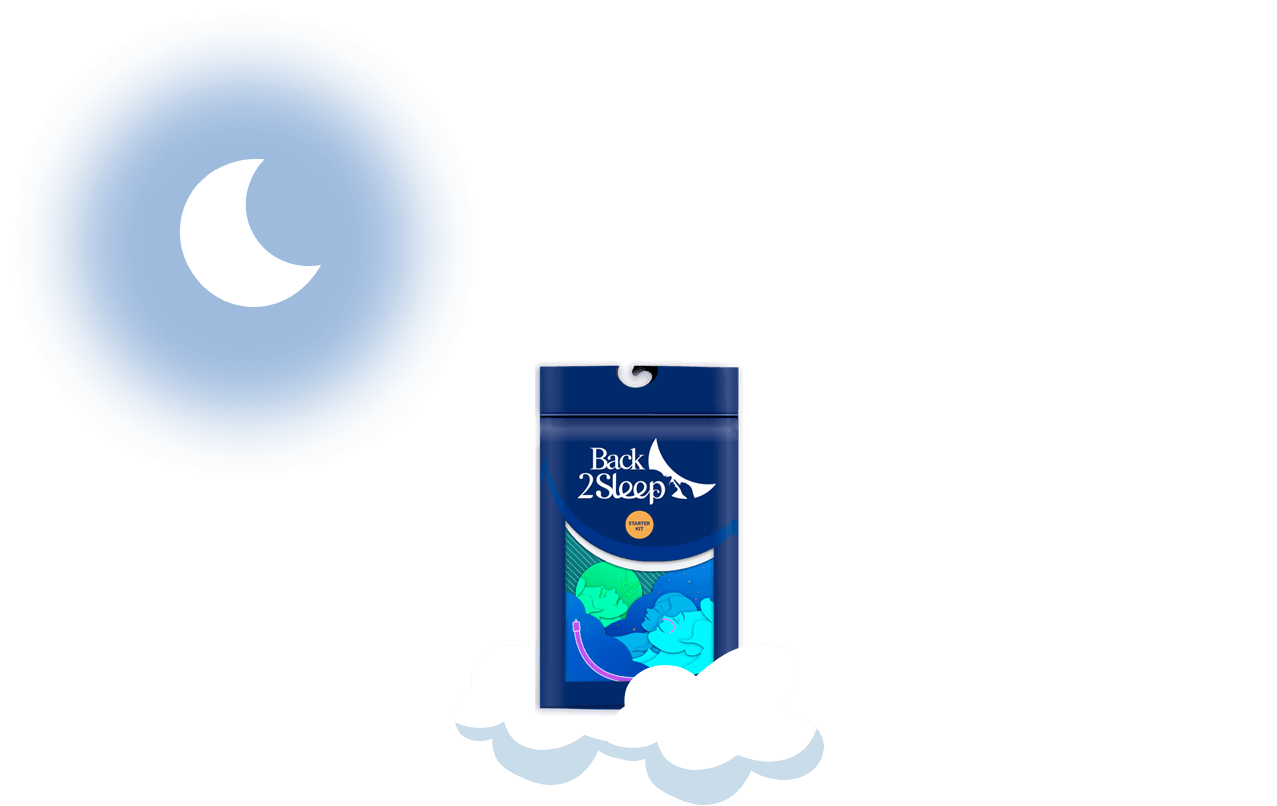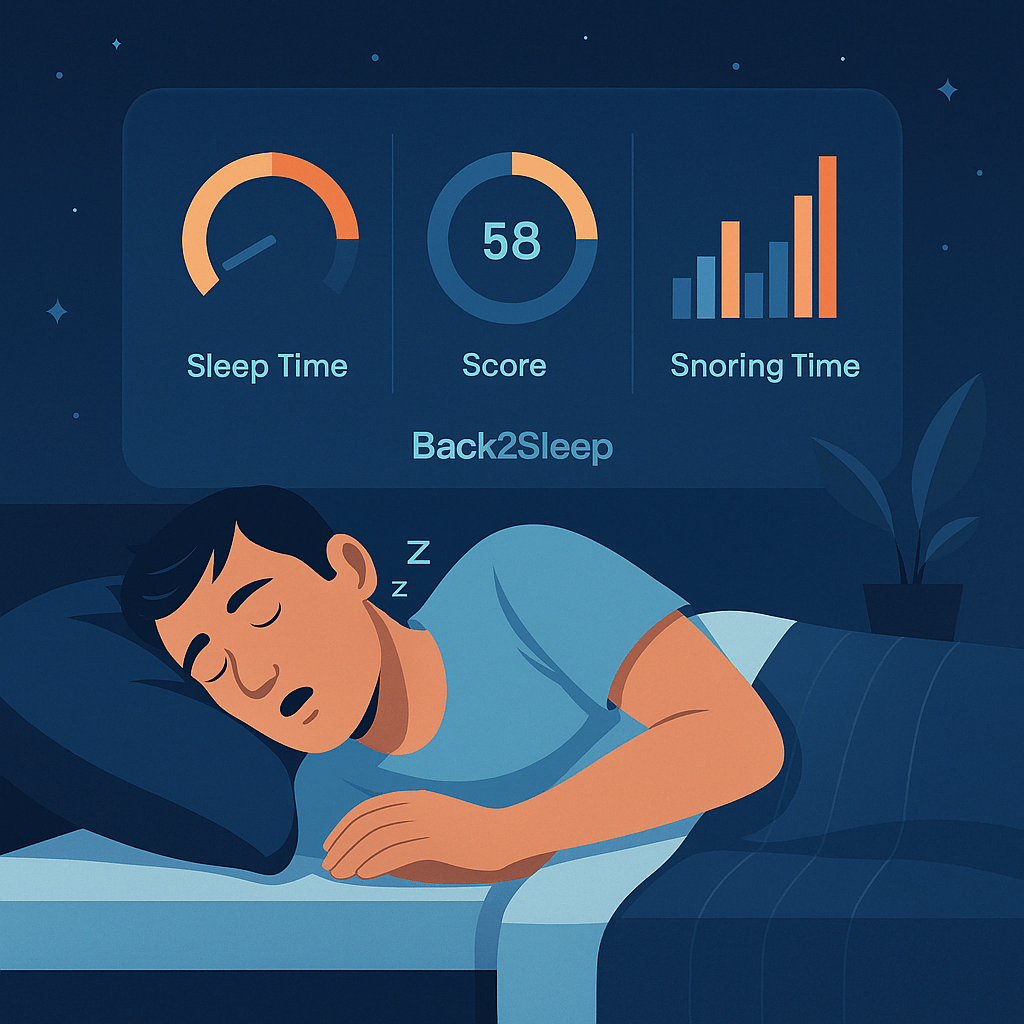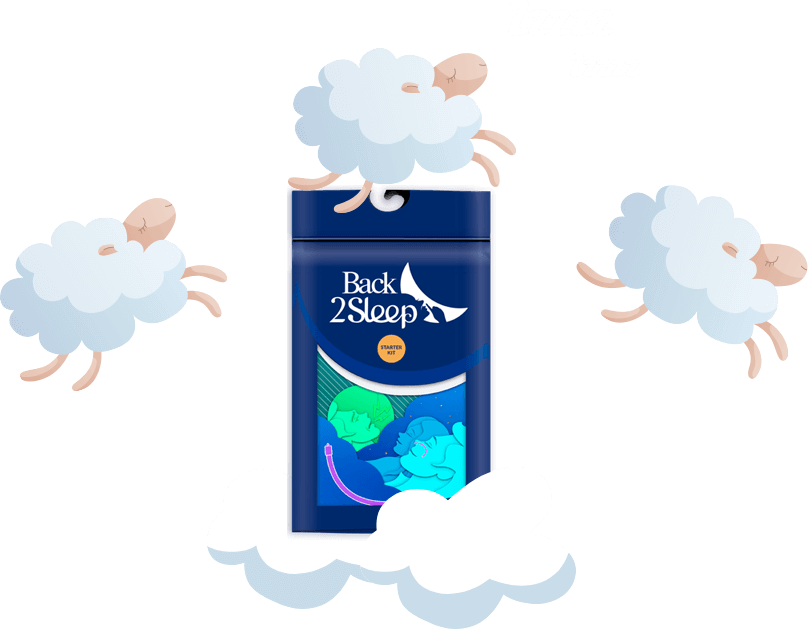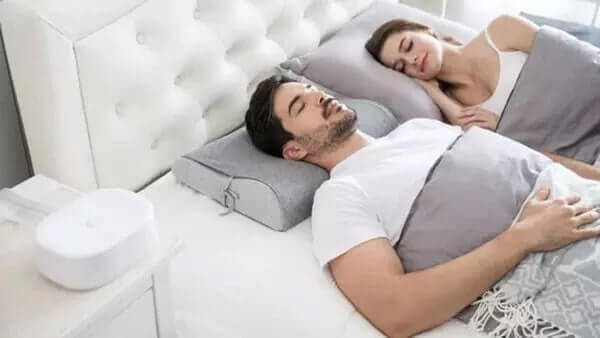The Ultimate Guide to Anti-Snoring Pillows: Sleep Better Tonight
Transform your noisy nights into peaceful, restorative sleep with the right pillow choice—discover how ergonomic, memory foam, and specialized anti-snoring pillows can eliminate snoring while improving your comfort and health.
Snoring disrupts millions of relationships and sleep patterns worldwide, turning what should be peaceful, restorative nights into frustrating symphonies of noise that leave both snorers and their partners exhausted. The solution? A specialized anti-snoring pillow designed to optimize head and neck positioning can dramatically reduce or eliminate snoring by maintaining proper spinal alignment and keeping airways open throughout the night. From ergonomic memory foam designs to hypoallergenic bamboo fiber options, the right pillow addresses the root mechanical causes of snoring—but for those seeking even more effective relief, innovative solutions like the Back2Sleep intranasal orthosis offer targeted airway support that works independently of sleeping position.
Snoring isn't just an annoying sound—it's a physiological phenomenon with real health implications. Understanding why snoring occurs and how the right pillow can help is the first step toward quieter, healthier sleep for everyone involved.
Snoring by the Numbers
Understanding Snoring: The Nocturnal Symphony Explained
Snoring occurs when airflow through the mouth and nose becomes partially obstructed during sleep, causing the soft tissues of the throat, soft palate, uvula, and tongue to vibrate as air struggles to pass through narrowed passages. This vibration produces the characteristic sound ranging from gentle buzzing to thunderous rattling that can reach 90 decibels—comparable to a chainsaw or lawnmower.
The physiological mechanism begins when we transition into sleep. Our throat muscles naturally relax, and for some individuals, this relaxation causes excessive tissue collapse that narrows the airway diameter. As breathing continues, the reduced space creates turbulent airflow that sets soft tissues into motion, generating the sounds we recognize as snoring.
Primary Risk Factors That Increase Snoring
Excess Weight: Additional fatty tissue around the neck compresses airways externally, while obesity increases internal airway soft tissue mass, creating double obstruction risk.
Advancing Age: Natural muscle tone loss with aging affects throat structures, causing increased collapsibility of airway tissues during sleep relaxation.
Alcohol Consumption: Sedative effects cause excessive muscle relaxation 2-3 hours before sleep, dramatically increasing airway collapse and snoring intensity.
Smoking Habit: Chronic irritation causes airway inflammation and swelling, narrowing passages while disrupting normal mucus clearance mechanisms.
Supine Sleep Position: Sleeping on your back allows gravity to pull the tongue backward toward the throat, creating mechanical obstruction of the airway.
Nasal Congestion: Allergies, deviated septum, or chronic sinusitis force mouth breathing, altering airflow dynamics and increasing soft tissue vibration.

How Sleep Position and Pillow Choice Affect Snoring
Your sleeping position directly influences snoring severity, with back sleeping (supine position) being the most problematic. When lying flat on your back, gravity pulls your tongue and soft palate backward, creating a natural obstruction that significantly narrows your airway diameter and intensifies vibrations.
⚠️ The Wrong Pillow Makes Everything Worse
Using an inappropriate pillow can dramatically aggravate snoring problems by forcing your head into positions that further compromise airway openness:
Too high: Excessive neck flexion pushes the chin toward the chest, creating a kink in the airway similar to bending a drinking straw.
Too flat: Insufficient support allows the head to tilt backward, causing the tongue to fall deeper into the throat.
Wrong firmness: Pillows that don't maintain proper cervical alignment throughout the night fail to keep airways optimally positioned.
This is precisely where ergonomic and memory foam anti-snoring pillows demonstrate their value. These specially designed sleep accessories work to maintain proper spinal alignment from your cervical vertebrae through your thoracic spine, ensuring that airways remain as open as possible throughout all sleep stages.
The Role of Allergies in Nighttime Snoring
Many snorers don't realize that dust mites living in their pillows and bedding trigger allergic reactions that exacerbate snoring. These microscopic creatures thrive in warm, humid environments like pillows, feeding on dead skin cells and producing allergenic proteins in their feces.
When you're allergic to dust mites, exposure causes nasal inflammation and congestion that forces mouth breathing—a major snoring contributor. This is why choosing hypoallergenic or anti-dust mite pillows can provide dual benefits: proper positioning plus reduced allergic inflammation.
When Snoring Signals Sleep Apnea
While occasional snoring is common and relatively benign, loud, chronic snoring can indicate obstructive sleep apnea (OSA)—a serious medical condition where breathing repeatedly stops and restarts during sleep.
Warning signs that require medical evaluation include:
- Excessively loud snoring heard through closed doors or in other rooms
- Witnessed breathing pauses or gasping during sleep
- Excessive daytime sleepiness despite adequate time in bed
- Morning headaches, particularly upon waking
- Difficulty concentrating, memory problems, or mood changes
- Frequent nighttime urination (nocturia)
- Night sweats unrelated to room temperature
If you experience these symptoms, it's crucial to consult a sleep specialist for proper diagnosis. Untreated sleep apnea increases risks of hypertension, heart disease, stroke, and diabetes. Learn more about sleep apnea symptoms and treatments.

The Science Behind Anti-Snoring Pillows: How They Actually Work
Anti-snoring pillows function on biomechanical principles designed to optimize head and neck positioning throughout the night. Their primary mission is maintaining proper cervical spine alignment that keeps your airway as open and unobstructed as possible during all sleep positions.
Unlike standard pillows that simply provide cushioning, anti-snoring pillows are engineered with specific shapes, contours, and materials that actively work to:
Maintain Neutral Spine Alignment: Proper cervical positioning prevents the head from tilting backward or forward excessively, keeping the airway in its most patent configuration.
Prevent Tongue Collapse: By supporting the head at an optimal angle, these pillows reduce gravitational pull on the tongue, minimizing its tendency to fall backward and obstruct breathing.
Reduce Soft Tissue Vibration: Better airway diameter achieved through proper positioning decreases air turbulence, directly reducing the vibrations that create snoring sounds.
Encourage Side Sleeping: Many designs feature contours that make side sleeping more comfortable while making back sleeping less appealing, naturally promoting the better sleep position.
Specialized Pillow Materials and Their Benefits
Memory foam (viscoelastic polyurethane) represents one of the most popular materials for anti-snoring pillows. Originally developed by NASA, this material responds to body heat and pressure, molding precisely to your unique head and neck contours while providing consistent support throughout the night. The foam's temperature-sensitive properties ensure it adapts to your morphology rather than forcing you to adapt to it.
Natural latex pillows offer a different approach, providing responsive yet supportive cushioning with excellent ventilation properties. Latex doesn't retain heat like memory foam, making it ideal for people who sleep hot. The material's natural resilience means it maintains its shape longer than traditional fills while offering hypoallergenic properties that resist dust mites and mold.
Orthopedic pillows feature specialized shapes—often with cervical contours, center depressions, or raised edges—specifically engineered to correct problematic sleeping postures. These designs provide targeted support for the natural curve of your neck, ensuring optimal airway positioning while simultaneously addressing cervical pain that many snorers also experience.

Why Back2Sleep Outperforms Traditional Pillows
Position-Independent
Works effectively regardless of sleep position—side, back, or stomach—providing consistent airway support that pillows can't match when you naturally shift during the night.
Direct Airway Support
The intranasal device physically holds airways open at the point of obstruction, addressing snoring's root cause rather than indirectly influencing it through positioning.
Immediate Results
Over 92% of users experience relief from the first night—no adjustment period required unlike pillows that may take weeks of adaptation.
Travel-Friendly
Compact and portable design fits easily in luggage without taking up pillow space, ensuring consistent snoring relief wherever you sleep.
Selecting Your Perfect Anti-Snoring Pillow: Essential Criteria
Choosing the right anti-snoring pillow requires careful consideration of multiple factors beyond simple comfort preferences. The ideal pillow for snoring reduction balances proper support, appropriate materials, and individual sleep habits.
Firmness Level: Finding the Goldilocks Zone
Pillow firmness represents a critical factor often overlooked by snorers. Too soft, and your head sinks excessively, losing the neutral alignment needed for open airways. Too firm, and your neck remains in an unnatural position that creates tension and potentially worsens obstruction.
The optimal firmness should allow your head to sink slightly—just enough to feel cradled—while maintaining a straight line from your ears through shoulders to hips when viewed from behind. This alignment ensures your airway remains in its most open configuration.
Material Considerations for Snorers
| Material Type | Best For | Key Benefits | Considerations |
|---|---|---|---|
| Memory Foam | All sleep positions, neck pain sufferers | Customized contouring, pressure relief, consistent support | Can retain heat, may have initial odor, adaptation period needed |
| Natural Latex | Hot sleepers, eco-conscious buyers | Excellent ventilation, hypoallergenic, durable, responsive | Firmer feel, higher cost, heavier weight |
| Buckwheat Hulls | Side sleepers, adjustable support seekers | Customizable loft, excellent airflow, maintains shape | Rustling sound with movement, requires periodic hull replacement |
| Shredded Foam | People wanting adjustability with foam comfort | Moldable support, better airflow than solid foam, adjustable fill | May clump over time, less contouring than memory foam |
Hypoallergenic Features and Pillow Covers
For the 30-40% of snorers whose symptoms worsen due to allergies, choosing pillows with hypoallergenic properties provides dual benefits. Look for materials naturally resistant to dust mites, mold, and mildew, such as latex, bamboo-derived rayon, or foam with antimicrobial treatments.
The pillowcase matters tremendously for allergy management. Opt for tightly woven covers (thread count 300+) that physically block dust mite penetration. Bamboo fiber covers offer natural antimicrobial properties plus excellent moisture-wicking, while organic cotton provides breathability without chemical treatments that might trigger sensitivities.
Maintenance and Longevity
A machine-washable pillow or cover significantly simplifies hygiene maintenance—crucial for allergy sufferers and anyone concerned about dust mite accumulation. Most quality anti-snoring pillows feature removable, washable covers even if the core material itself can't be immersed in water.
Expect to replace anti-snoring pillows every 18-36 months depending on material quality and maintenance. Signs that replacement time has arrived include visible flattening, loss of support, increased neck pain, or return of snoring symptoms that had previously improved.

Anti-Snoring Pillows: Honest Assessment of Pros and Cons
Before investing in an anti-snoring pillow, understanding both the genuine benefits and realistic limitations helps set appropriate expectations and determine whether this solution fits your specific snoring situation.
Significant Advantages
Non-Invasive Approach: Unlike CPAP machines, oral appliances, or surgical interventions, anti-snoring pillows require no medical procedures, fittings, or complex equipment.
Immediate Implementation: Simply replace your existing pillow with an anti-snoring model—no doctor visits, prescriptions, or waiting periods required to begin treatment.
Dual Health Benefits: Beyond snoring reduction, proper cervical alignment alleviates neck pain, reduces morning headaches, and improves overall sleep quality for both partners.
Cost-Effective Solution: One-time investment of $50-$150 compares favorably to ongoing costs of nasal strips, mouthpieces, or thousands for CPAP equipment.
Silent Operation: Unlike CPAP machines that produce noise from motors and airflow, pillows work completely silently without disturbing your partner.
Travel Convenience: Most anti-snoring pillows compress for travel, fitting into luggage more easily than standard pillows while maintaining therapeutic benefits on the road.
Important Limitations
⚠️ Realistic Expectations Are Essential
Adaptation period required: Many users need 1-3 weeks to adjust to the different shape, firmness, or height of an anti-snoring pillow, particularly when switching from traditional flat pillows.
Not universally effective: Effectiveness varies significantly based on snoring cause—pillows work best for position-dependent snoring but offer limited help for nasal obstruction, obesity-related snoring, or structural airway problems.
Insufficient for sleep apnea: While pillows may reduce mild apnea symptoms, they should never replace medically prescribed CPAP therapy or oral appliances for diagnosed obstructive sleep apnea.
Higher upfront cost: Quality anti-snoring pillows typically cost 2-5 times more than standard pillows, though this represents a one-time investment rather than ongoing expenses.
Maintenance requirements: Regular cleaning of covers, proper storage, and eventual replacement (every 18-36 months) are necessary to maintain effectiveness and hygiene.
Top Anti-Snoring Pillows: Detailed Comparison Guide
Navigating the crowded anti-snoring pillow market can feel overwhelming with dozens of brands claiming miraculous results. We've analyzed the most popular options based on user reviews, material quality, ergonomic design, and value to help you make an informed decision.
Leading Anti-Snoring Pillow Models
Wopilo Plus: This French-designed pillow combines latest-generation adaptive memory foam with premium microfiber filling, creating a hybrid that offers both customized contouring and plush comfort. The soft cotton percale cover provides breathability while remaining gentle on skin. Particularly effective for combination sleepers who change positions throughout the night, the Wopilo Plus maintains consistent support regardless of sleeping posture. It's also certified hypoallergenic, making it suitable for dust mite allergy sufferers—a common snoring aggravator.
Matt Sleeps Pillow: Featuring an innovative 3D ventilation system with air channels throughout the foam core, this pillow addresses the common complaint about memory foam retaining heat. The Tencel and viscose blend cover enhances temperature regulation through superior moisture-wicking properties. The pillow's contoured ergonomic shape specifically targets snorers by maintaining optimal neck angle while side sleeping. User reviews consistently highlight immediate snoring reduction and sustained comfort over months of use.
Emma Original Premium: Standing out with its adjustable firmness system, this pillow contains three removable foam layers with different densities that you can add, remove, or rearrange to create your perfect support level. This customization proves particularly valuable for snorers unsure about their ideal pillow height—too high or too low can worsen symptoms. The pillow incorporates phase-change thermoregulating technology that actively absorbs excess body heat and releases it when you cool down, maintaining consistent comfortable temperature throughout the night.
What Users Actually Say
"After trying three different anti-snoring pillows, the Emma Premium finally solved my problem. The adjustable layers let me find the exact height that keeps my airways open—my wife says it's like sleeping next to a different person!"
"The Wopilo Plus definitely reduced my snoring, though it took about 10 days to get used to the firmer support. Now I wake up without neck pain for the first time in years, and my husband reports I'm much quieter at night."
"I was skeptical about the Matt Sleeps ventilation claims, but this pillow genuinely stays cool all night unlike my previous memory foam. My snoring hasn't disappeared completely, but it's significantly quieter according to my partner."

Beyond Pillows: The Back2Sleep Intranasal Orthosis Advantage
If anti-snoring pillows haven't delivered the relief you hoped for, or if you're looking for a position-independent solution that works no matter how you sleep, the Back2Sleep intranasal orthosis represents an innovative alternative approach to snoring management.
How the Intranasal Orthosis Works Differently
Unlike pillows that indirectly influence airway positioning through head and neck alignment, the Back2Sleep device works directly at the point of obstruction. This small, soft silicone tube inserts gently into one nostril, extending to the soft palate area where most snoring-related collapse occurs.
The device functions as an internal stent that physically holds the airway open, preventing the soft tissue collapse that causes snoring. Because it works mechanically rather than positionally, it provides consistent effectiveness regardless of whether you sleep on your back, side, or stomach—a significant advantage over pillows whose benefits depend heavily on maintaining specific positions.
Key Benefits Over Traditional Pillows
✓ Position Independent: Works effectively in all sleeping positions without requiring you to maintain specific postures—ideal for restless sleepers who frequently change positions.
✓ Medical-Grade Materials: Crafted from hypoallergenic medical silicone that minimizes irritation risk while providing comfortable, flexible support throughout the night.
✓ Discreet Design: Virtually invisible during use, with the device extending internally rather than creating external bulk that might disturb your partner or make you self-conscious.
✓ Travel Friendly: Compact carrying case fits easily in luggage, briefcase, or pocket—ensuring consistent snoring relief whether you're home, traveling for business, or on vacation.
✓ Immediate Results: Over 92% of users report significant snoring reduction from the very first night, with no adjustment period required unlike pillows that may take weeks of adaptation.
✓ Addresses Nasal Obstruction: Particularly effective for snorers whose symptoms stem from nasal passage narrowing, deviated septum, or upper airway resistance that pillows cannot address.
Real User Experiences with Back2Sleep
"I tried four different anti-snoring pillows with minimal success before discovering Back2Sleep. The difference was night and day—literally from the first night, my wife said I was 80% quieter. No more sleeping in separate rooms!"
"As someone who moves constantly during sleep, pillows never worked for me because I'd end up in positions that negated their benefits. Back2Sleep works regardless of how I'm positioned—it's been transformative for both me and my partner."
"The first few nights felt a bit unusual, but by day four I didn't even notice it was there. My snoring has reduced dramatically, and I wake up feeling more refreshed. The travel convenience is an unexpected bonus."

Scientific Evidence and Medical Expert Perspectives
Medical research into snoring management consistently emphasizes that sleeping position plays a crucial role in symptom severity and treatment effectiveness. Multiple peer-reviewed studies have documented significant snoring reduction when patients transition from supine (back) to lateral (side) sleeping positions.
According to sleep medicine specialists, "Lateral sleeping position is often the first-line recommendation for positional snoring" because this posture prevents the tongue from falling backward and obstructing the airway. This mechanism explains why anti-snoring pillows—which encourage and maintain side sleeping—demonstrate effectiveness for certain snorer populations.
What Research Shows About Pillow Effectiveness
Clinical studies examining specially designed pillows for snoring reveal mixed but promising results. A systematic review published in sleep medicine journals found that cervical pillows and position-maintaining pillows reduced snoring frequency and intensity in approximately 40-60% of participants with position-dependent snoring.
However, researchers emphasize that effectiveness varies significantly based on individual factors:
- Underlying cause: Pillows work best for position-dependent snoring but show minimal benefit when snoring stems from obesity, structural abnormalities, or significant sleep apnea.
- Body morphology: Neck length, jaw structure, and soft tissue volume influence how much positional change affects airway patency.
- Severity level: Mild to moderate snorers typically experience better results than heavy snorers with multiple contributing factors.
- Compliance: Consistent nightly use is essential—sporadic pillow use yields inconsistent results.
Important Distinction: Snoring vs. Sleep Apnea
⚠️ Critical Medical Distinction
While anti-snoring pillows may reduce simple snoring, they are NOT adequate treatment for obstructive sleep apnea (OSA)—a serious medical condition requiring proper diagnosis and appropriate therapy.
Sleep apnea involves complete or partial airway collapse causing breathing cessation for 10+ seconds, often hundreds of times per night. This oxygen deprivation increases risks of cardiovascular disease, stroke, diabetes, and cognitive impairment.
Standard treatment for moderate-to-severe OSA typically requires continuous positive airway pressure (CPAP) therapy, oral appliances, or surgical intervention—not positioning devices or pillows alone.

Recognizing When Professional Medical Evaluation Is Necessary
If you've tried anti-snoring pillows and other home remedies without significant improvement, or if you experience certain warning symptoms, it's essential to consult a sleep specialist for comprehensive evaluation. Persistent snoring can indicate underlying health issues requiring medical intervention beyond simple positioning adjustments.
Red Flags Requiring Medical Attention
Witnessed Breathing Pauses: Partner reports you stop breathing for several seconds during sleep, followed by gasping or choking sounds—classic sleep apnea indicator.
Excessive Daytime Sleepiness: Overwhelming urge to sleep during normal activities despite spending adequate time in bed—suggesting poor sleep quality from breathing disruptions.
Morning Headaches: Waking regularly with headaches, particularly across the forehead, resulting from oxygen desaturation and carbon dioxide buildup during sleep.
Cognitive Impairment: Difficulty concentrating, memory problems, mood changes, or decreased work performance—all potential consequences of disrupted sleep architecture.
Extremely Loud Snoring: Sound level audible through closed doors or in adjacent rooms, often described by partners as "chainsaw-like" or "impossible to sleep through."
Nighttime Complications: Frequent night sweats, regular awakenings with dry mouth or sore throat, or multiple bathroom trips (nocturia) disrupting sleep continuity.
Professional Treatment Options
A qualified sleep specialist can conduct polysomnography (sleep study) to diagnose the exact nature and severity of your condition. Based on findings, recommended treatments may include:
- CPAP Therapy: Continuous positive airway pressure machines that deliver pressurized air through a mask, preventing airway collapse during sleep—gold standard for moderate-to-severe OSA.
- Oral Appliances: Custom-fitted dental devices that reposition the jaw and tongue forward, maintaining open airways—effective for mild-to-moderate apnea and primary snoring.
- Intranasal Devices: Medical-grade solutions like Back2Sleep intranasal orthosis that provide internal airway support without external machinery.
- Surgical Interventions: Procedures to remove excess tissue, correct structural abnormalities, or stabilize airway structures—reserved for cases where conservative treatments prove insufficient.
- Weight Management Programs: Medically supervised diet and exercise plans, as losing even 10% of body weight can significantly reduce apnea severity in overweight individuals.

Frequently Asked Questions About Anti-Snoring Pillows
Your Path to Quieter, Better Sleep Starts Tonight
Anti-snoring pillows offer genuine benefits for many people suffering from position-dependent snoring, providing a non-invasive, cost-effective approach that also improves cervical alignment and overall sleep comfort. However, they're not a universal solution—effectiveness depends heavily on individual anatomy, snoring causes, and sleep habits.
For position-independent snoring relief or when pillows haven't provided adequate results, consider the innovative Back2Sleep intranasal orthosis—a medical-grade device with over 92% user satisfaction that works regardless of sleep position.
Explore our comprehensive sleep health resources for more evidence-based strategies, or contact our sleep specialists for personalized guidance on choosing the optimal solution for your specific snoring challenges.








